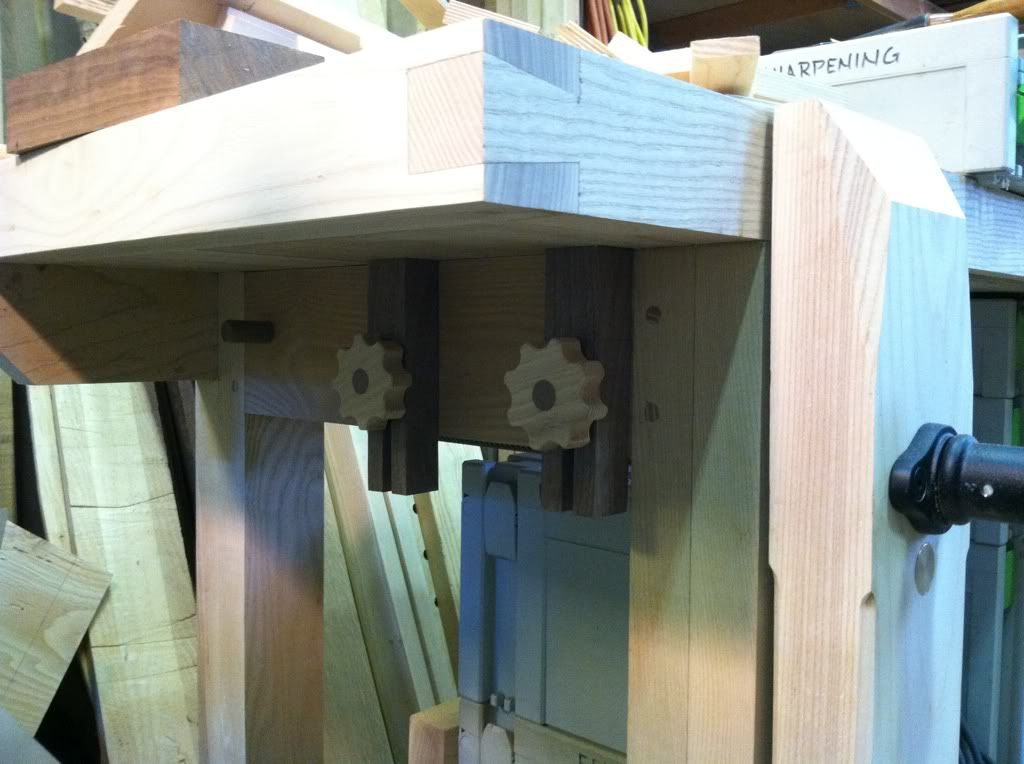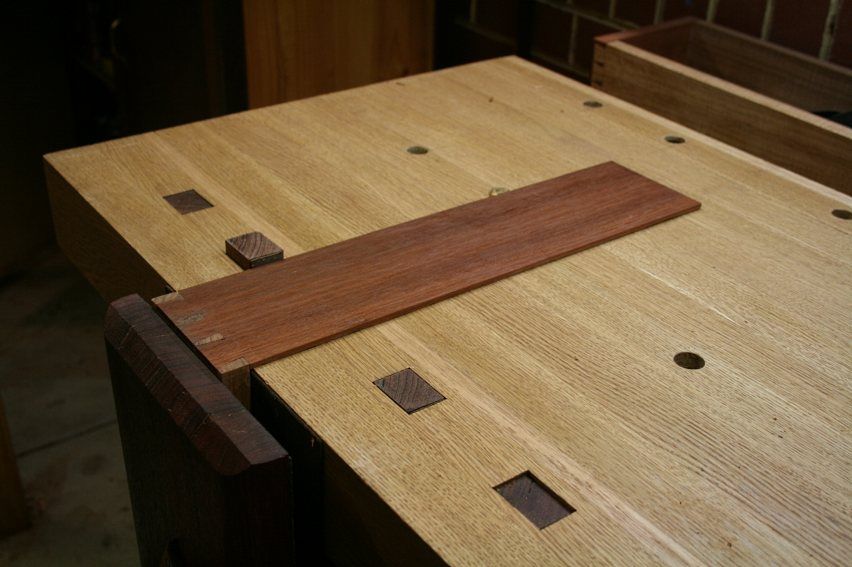This may be a picayune detail to worry about on an almost-completed bench, but I thought I'd poll the group about the ideal location for a planing stop. I notice that Chris Schwartz puts his about six inches from the front edge of the bench, and I don't remember reading any reason for doing that. I've noticed other stops pretty close to the front edge of the bench. Unless one anticipates face jointing wide stock most of the time, it seems like close to the front edge would be more ergonomic. What do you think?
Also, I'm looking at Ian Kirby's planing stop from Scott Landis' Workbench Book, and it seems pretty clever to me (it slides up and down through the top, mounted on a bolt on one of the legs). Has anybody used that design?





 Reply With Quote
Reply With Quote





